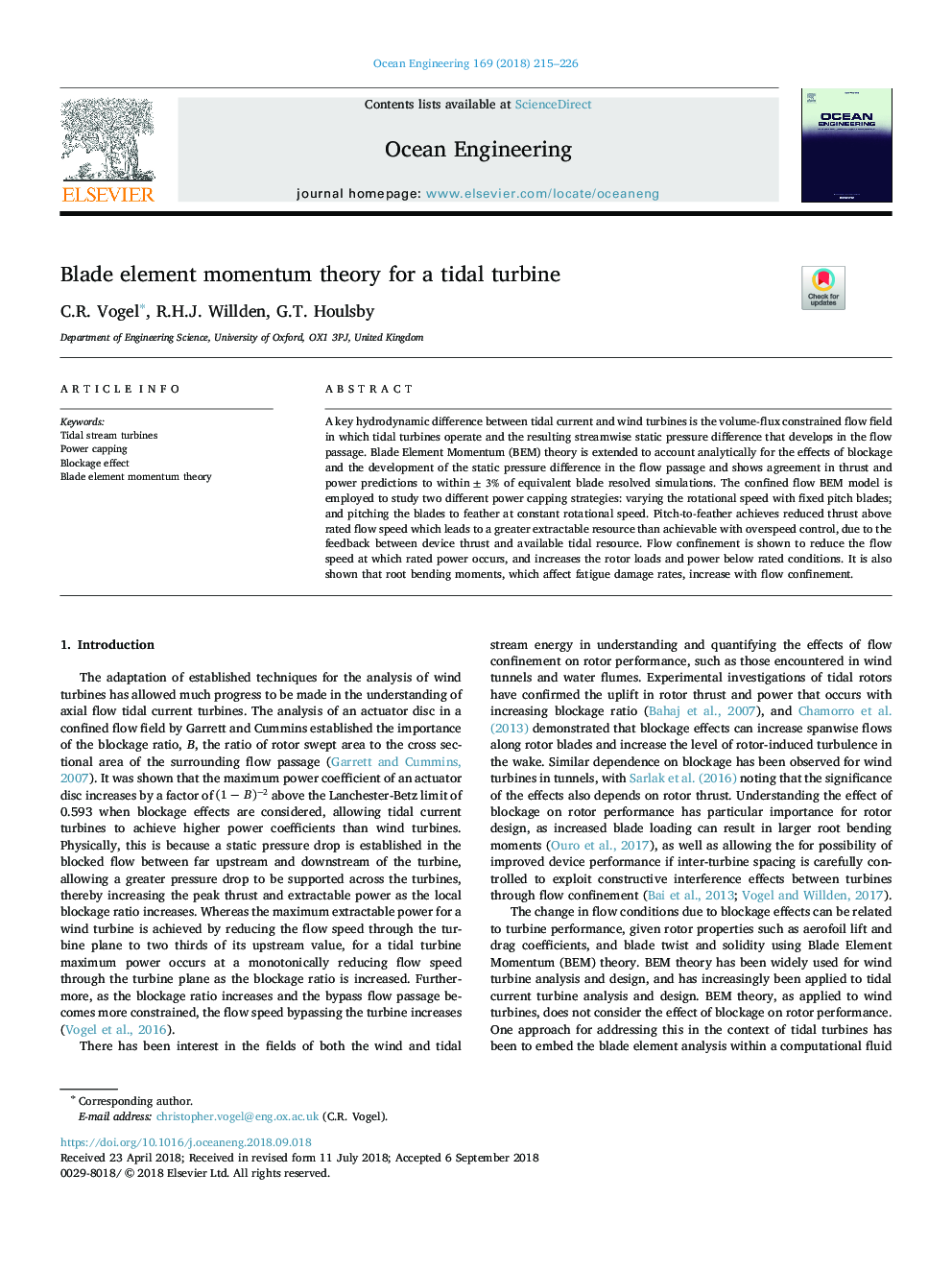| Article ID | Journal | Published Year | Pages | File Type |
|---|---|---|---|---|
| 10156185 | Ocean Engineering | 2018 | 12 Pages |
Abstract
A key hydrodynamic difference between tidal current and wind turbines is the volume-flux constrained flow field in which tidal turbines operate and the resulting streamwise static pressure difference that develops in the flow passage. Blade Element Momentum (BEM) theory is extended to account analytically for the effects of blockage and the development of the static pressure difference in the flow passage and shows agreement in thrust and power predictions to within ±3% of equivalent blade resolved simulations. The confined flow BEM model is employed to study two different power capping strategies: varying the rotational speed with fixed pitch blades; and pitching the blades to feather at constant rotational speed. Pitch-to-feather achieves reduced thrust above rated flow speed which leads to a greater extractable resource than achievable with overspeed control, due to the feedback between device thrust and available tidal resource. Flow confinement is shown to reduce the flow speed at which rated power occurs, and increases the rotor loads and power below rated conditions. It is also shown that root bending moments, which affect fatigue damage rates, increase with flow confinement.
Related Topics
Physical Sciences and Engineering
Engineering
Ocean Engineering
Authors
C.R. Vogel, R.H.J. Willden, G.T. Houlsby,
